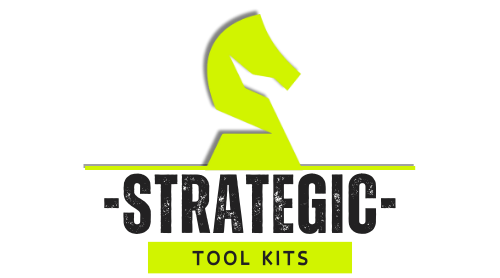Adapting to change is crucial for any organization. Workforce transformation ensures companies stay competitive and grow. This involves redefining roles, upskilling employees, and fostering a culture of continuous improvement.
The following principles guide successful workforce transformation, providing a clear roadmap for leaders to navigate this critical process.
1. Focus on Concrete Business Outcomes

Effective workforce transformation begins with a clear understanding of the desired business outcomes. Leaders must set specific goals that define what the transformation aims to achieve. This includes identifying key performance indicators (KPIs) that align with the organization’s strategic objectives.
Concrete business outcomes provide a clear direction for the transformation efforts, ensuring that all initiatives are purposeful and aligned with the company’s broader goals. For instance, if a company aims to improve customer satisfaction, the transformation might focus on enhancing employee skills in customer service and communication.
Setting clear outcomes also helps in prioritizing resources and efforts. It allows leaders to concentrate on areas that will deliver the highest impact, ensuring that the transformation drives tangible improvements in performance and productivity. By focusing on specific goals, organizations can measure progress accurately and adjust their strategies as needed to stay on track.
2. Encourage Emotional Commitment

Emotional commitment from employees is essential for successful workforce transformation. Employees need to feel personally invested in the change process. This buy-in enhances their engagement, motivation, and willingness to adapt.
Leaders should communicate the reasons for the transformation clearly and passionately, showing how it benefits both the organization and the employees. Demonstrating genuine enthusiasm and commitment inspires employees to follow suit.
Creating a sense of purpose is also key. Employees need to understand how their contributions impact the organization’s goals. Linking individual roles to broader business objectives and celebrating small wins along the way helps achieve this. Recognizing and rewarding efforts further reinforces a sense of accomplishment and belonging.
A supportive environment where employees feel heard and valued is crucial. Regular feedback sessions, open communication channels, and opportunities for employees to voice their concerns and suggestions can enhance emotional commitment. When employees see that their opinions matter and their contributions are valued, they are more likely to fully commit to the transformation process.
3. Design a Compelling Employee Experience

Designing a compelling employee experience is crucial for workforce transformation. A positive employee experience not only makes the organization an attractive place to work but also supports employees in performing their jobs effectively.
Start by understanding what employees need to succeed. This includes the tools and resources they use, the physical workspace, and opportunities for collaboration. Consider how changes will impact their day-to-day activities and strive to make these transitions as smooth as possible.
Investing in technology that enhances productivity and simplifies tasks is vital. Ensure that new systems are user-friendly and that employees are adequately trained to use them. Providing continuous learning opportunities helps employees develop new skills and stay engaged.
Creating a flexible work environment that supports work-life balance is also important. Allow for remote work options, and flexible hours, and provide spaces that accommodate different work styles, whether it’s collaborative areas or quiet zones for focused work.
Listening to employee feedback is essential. Regularly gather input on their experience and use this data to make informed decisions about improvements. Recognizing and addressing their concerns fosters a sense of value and inclusion.
4. Prioritize High-Impact Roles

Workforce transformation should start with roles that have the greatest impact on the organization’s success. Identifying and focusing on these key roles ensures that the transformation drives significant and immediate business results.
Begin by pinpointing positions critical to achieving strategic goals. These roles often have a direct influence on performance metrics such as revenue growth, customer satisfaction, or operational efficiency. Once identified, prioritize efforts to support and enhance these positions through targeted training, resource allocation, and process improvements.
Develop tailored development programs for employees in these roles. Upskilling and reskilling initiatives should align with the specific demands of these positions, ensuring that employees have the necessary competencies to excel. Providing access to advanced tools and technologies can further empower them to perform at their best.
Additionally, clear communication of expectations and objectives is vital. Employees need to understand the importance of their roles and how their contributions directly impact the organization’s success. Regular performance feedback and recognition of their efforts can boost morale and reinforce their commitment to the transformation process.
5. Change Behavior First

Successful workforce transformation requires changing behaviors before implementing new processes or technologies. Behavioral change sets the foundation for a culture that can adapt and thrive amid transformation.
Start by clearly defining the behaviors that align with the organization’s goals. These may include collaboration, innovation, accountability, or customer focus. Communicate these expectations clearly and consistently across all levels of the organization.
Leaders must model the desired behaviors. When employees see leaders embodying the change, it sets a powerful example and encourages them to follow suit. Leadership training and development programs can support this, ensuring that leaders are equipped to drive and sustain behavioral change.
Provide employees with the tools and support they need to adopt new behaviors. This might include training programs, workshops, or mentorship opportunities. Create an environment that encourages experimentation and learning, where employees feel safe to try new approaches without fear of failure.
Regular feedback is crucial. Offer constructive feedback to reinforce positive behaviors and address areas for improvement. Recognize and reward employees who demonstrate the desired behaviors, creating a culture of positive reinforcement.
6. Promote Employee-Driven Innovation

Encouraging employees to take the initiative in driving innovation is essential for successful workforce transformation. Employee-driven innovation leverages the creativity and expertise of the workforce to generate new ideas and solutions that can propel the organization forward.
Create an environment that supports and rewards innovation. This starts with leadership openly endorsing and valuing new ideas. Encourage a culture where experimentation is welcomed, and failure is seen as a learning opportunity rather than a setback. Providing platforms for idea sharing, such as innovation hubs or suggestion programs, can facilitate this process.
Provide the necessary resources and training to enable employees to innovate effectively. This could include access to advanced tools and technologies, training programs focused on creativity and problem-solving, and time allocated specifically for innovation activities. Encouraging cross-functional collaboration can also spark new ideas, as employees from different departments bring diverse perspectives and skills to the table.
Recognize and celebrate innovative efforts. Publicly acknowledging and rewarding employees who contribute valuable ideas reinforces the importance of innovation within the company culture. This recognition can take various forms, such as awards, bonuses, or opportunities for career advancement.
7. Plan for Long-Term Sustainability

Workforce transformation is not a one-time event but an ongoing process that requires careful planning and sustained effort. Ensuring long-term sustainability involves setting up mechanisms and practices that support continuous improvement and adaptation.
Develop a clear, phased plan that outlines short-term and long-term goals. This plan should detail the steps needed to achieve each milestone and include timelines for implementation. Regularly review and update the plan to reflect changing circumstances and new insights.
Invest in continuous learning and development. Provide employees with ongoing training opportunities to keep their skills up to date. Encourage a culture of lifelong learning where employees are motivated to acquire new knowledge and competencies regularly. This can be supported through various initiatives such as e-learning platforms, workshops, and professional development courses.
Implement robust monitoring and evaluation systems. Track progress against the set goals and use data-driven insights to make informed decisions. Regular assessments help identify areas of improvement and ensure that the transformation efforts are on the right track. Adjust strategies as needed based on feedback and performance metrics.
Engage stakeholders at all levels. Regular communication with employees, managers, and other stakeholders keeps everyone informed and involved in the transformation process. Solicit feedback and involve employees in decision-making to foster a sense of ownership and commitment to the change.
8. Engage Cultural Influencers

Workforce transformation requires aligning the organization’s culture with new goals and behaviors. Engaging cultural influencers within the organization can drive this alignment and facilitate smoother transitions.
Identify and leverage influential employees who embody the desired cultural attributes. These individuals, often respected and trusted by their peers, can act as change agents. Their endorsement of new behaviors and practices can significantly impact the broader workforce, encouraging others to follow suit.
Provide these influencers with the necessary support and resources. Equip them with clear messages about the transformation goals and the behaviors expected. Offer training to help them effectively communicate and model these behaviors to their colleagues. Their role is to bridge the gap between leadership and the general workforce, ensuring that the transformation message is consistently reinforced.
Encourage these influencers to share their experiences and success stories. Personal anecdotes and practical examples can make the transformation goals more relatable and achievable for other employees. Create forums or platforms where these stories can be shared, such as internal newsletters, meetings, or social media channels.
Create a collaborative environment where cultural influencers can work together and with leadership. Regular interactions and feedback sessions between influencers and management can help identify challenges and opportunities, ensuring that the transformation strategy remains effective and responsive to employee needs.
9. Include Everyone Except the Unwilling

A comprehensive workforce transformation requires the involvement of the entire organization while acknowledging that not everyone may be on board. Inclusivity is key, but it’s also important to recognize and address resistance.
Start by communicating the benefits of the transformation clearly and openly. Employees need to understand why the change is happening and how it will benefit them and the organization. Transparent communication helps reduce uncertainty and builds trust.
Encourage participation from all employees, regardless of their role or seniority. This inclusivity ensures a diverse range of perspectives and ideas, which can enhance the transformation process. Provide opportunities for employees to contribute their insights and suggestions through surveys, workshops, or open forums.
Identify and address resistance early. Some employees may be reluctant to change due to fear, lack of understanding, or discomfort with new ways of working. Engage with these individuals directly, listen to their concerns, and provide support to help them adapt. This might include additional training, mentorship, or reassignment to roles where they feel more comfortable.
However, recognize that some individuals may be unwilling to adapt despite best efforts. For these cases, it’s important to make tough decisions that prioritize the overall success of the transformation. This might involve reassigning or, in some cases, letting go of employees who are consistently resistant to change and hindering progress.
10. Track Progress and Adjust Accordingly

Tracking progress is essential to ensure that workforce transformation efforts are effective and on course. This involves monitoring key metrics, gathering feedback, and making necessary adjustments based on data and insights.
Establish clear metrics to measure progress. These can include performance indicators such as employee productivity, engagement levels, skill development, and business outcomes. Use these metrics to set benchmarks and track improvements over time.
Implement regular check-ins and reviews. Schedule periodic assessments to evaluate the progress of the transformation initiatives. These reviews should involve key stakeholders, including leaders, managers, and employees, to provide a comprehensive view of the progress and identify any areas that need attention.
Gather feedback from employees. Regularly solicit input from the workforce through surveys, focus groups, or one-on-one interviews. Understanding their experiences and challenges can provide valuable insights into what’s working and what needs to be improved.
Use data-driven insights to make informed decisions. Analyze the collected data to identify trends, successes, and areas for improvement. This analysis should guide any necessary adjustments to the transformation strategy, ensuring that it remains aligned with organizational goals and responsive to employee needs.
Conclusion
Workforce transformation is crucial for companies aiming to remain competitive and achieve sustainable growth. By implementing strategic changes, engaging employees, and creating a culture of continuous improvement, organizations can navigate the complexities of the modern business environment. A well-executed transformation ensures employees are equipped, motivated, and aligned with organizational goals, leading to enhanced performance and long-term success.

